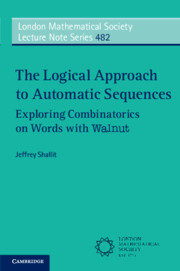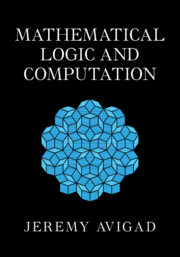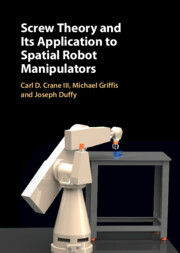Refine search
Actions for selected content:
48290 results in Computer Science
Trajectory design via unsupervised probabilistic learning on optimal manifolds – Corrigendum
-
- Journal:
- Data-Centric Engineering / Volume 3 / 2022
- Published online by Cambridge University Press:
- 14 September 2022, e28
-
- Article
-
- You have access
- Open access
- HTML
- Export citation
Block dense weighted networks with augmented degree correction
-
- Journal:
- Network Science / Volume 10 / Issue 3 / September 2022
- Published online by Cambridge University Press:
- 14 September 2022, pp. 301-321
-
- Article
- Export citation
Strong and weak tie homophily in adolescent friendship networks: An analysis of same-race and same-gender ties
-
- Journal:
- Network Science / Volume 10 / Issue 3 / September 2022
- Published online by Cambridge University Press:
- 14 September 2022, pp. 283-300
-
- Article
-
- You have access
- Open access
- HTML
- Export citation
Evaluation of seed morphology, seedling genetic variation, and components for seed storage of Agave landraces of commercial interest
-
- Journal:
- Experimental Results / Volume 3 / 2022
- Published online by Cambridge University Press:
- 13 September 2022, e25
-
- Article
-
- You have access
- Open access
- HTML
- Export citation
How teams adapt to exogenous shocks: Experimental evidence with node knockouts of central members
-
- Journal:
- Network Science / Volume 10 / Issue 3 / September 2022
- Published online by Cambridge University Press:
- 13 September 2022, pp. 261-282
-
- Article
-
- You have access
- Open access
- HTML
- Export citation
Relaxation of the parameter independence assumption in the bootComb R package
-
- Journal:
- Experimental Results / Volume 4 / 2023
- Published online by Cambridge University Press:
- 13 September 2022, e1
-
- Article
-
- You have access
- Open access
- HTML
- Export citation
Improving aspect-based neural sentiment classification with lexicon enhancement, attention regularization and sentiment induction
-
- Journal:
- Natural Language Engineering / Volume 30 / Issue 1 / January 2024
- Published online by Cambridge University Press:
- 12 September 2022, pp. 1-30
-
- Article
-
- You have access
- Open access
- HTML
- Export citation
A framework for belief revision under restrictions
-
- Journal:
- The Knowledge Engineering Review / Volume 37 / 2022
- Published online by Cambridge University Press:
- 12 September 2022, e8
-
- Article
- Export citation
ON SHAVRUKOV’S NON-ISOMORPHISM THEOREM FOR DIAGONALIZABLE ALGEBRAS
- Part of
-
- Journal:
- The Review of Symbolic Logic / Volume 17 / Issue 1 / March 2024
- Published online by Cambridge University Press:
- 12 September 2022, pp. 206-243
- Print publication:
- March 2024
-
- Article
- Export citation

The Logical Approach to Automatic Sequences
- Exploring Combinatorics on Words with Walnut
-
- Published online:
- 09 September 2022
- Print publication:
- 29 September 2022
Nonparametric estimation of some dividend problems in the perturbed compound Poisson model
-
- Journal:
- Probability in the Engineering and Informational Sciences / Volume 37 / Issue 2 / April 2023
- Published online by Cambridge University Press:
- 09 September 2022, pp. 418-441
-
- Article
-
- You have access
- HTML
- Export citation
ROB volume 40 issue 10 Cover and Front matter
-
- Article
-
- You have access
- Export citation
ROB volume 40 issue 10 Cover and Back matter
-
- Article
-
- You have access
- Export citation

Mathematical Logic and Computation
-
- Published online:
- 08 September 2022
- Print publication:
- 24 November 2022

Screw Theory and its Application to Spatial Robot Manipulators
-
- Published online:
- 08 September 2022
- Print publication:
- 15 September 2022
Dedication
-
- Book:
- Computational Thinking for Life Scientists
- Published online:
- 19 August 2022
- Print publication:
- 08 September 2022, pp v-vi
-
- Chapter
- Export citation
1 - Crash Introduction to Python
- from Part I: - Programming in Python
-
- Book:
- Computational Thinking for Life Scientists
- Published online:
- 19 August 2022
- Print publication:
- 08 September 2022, pp 7-41
-
- Chapter
- Export citation













